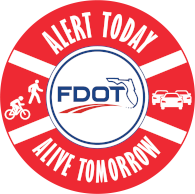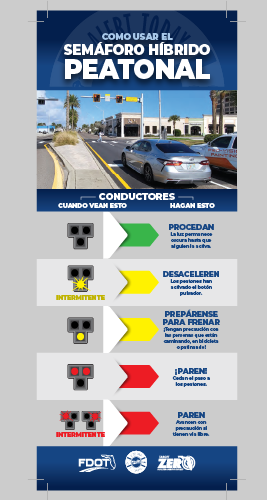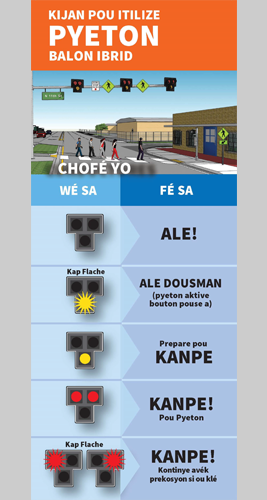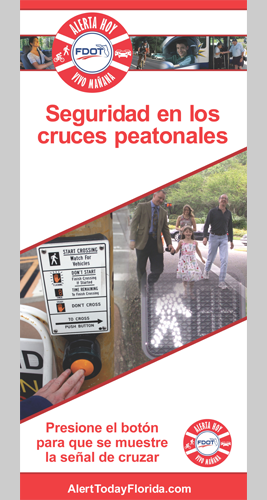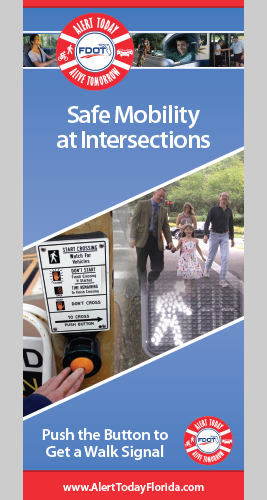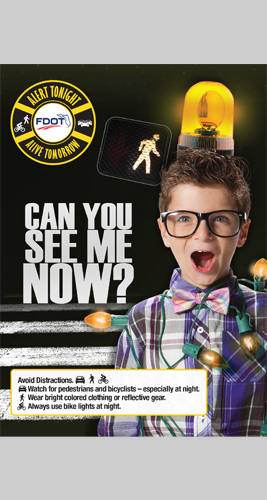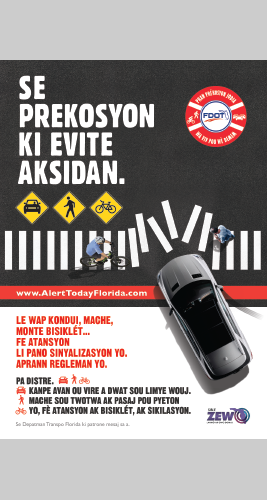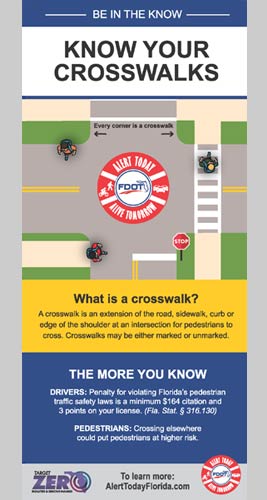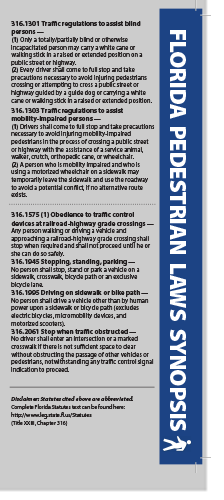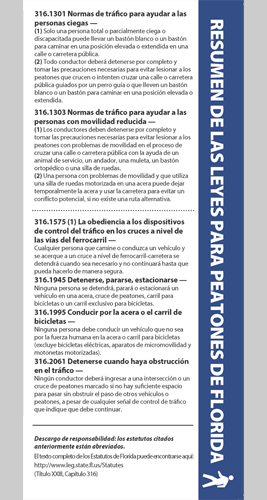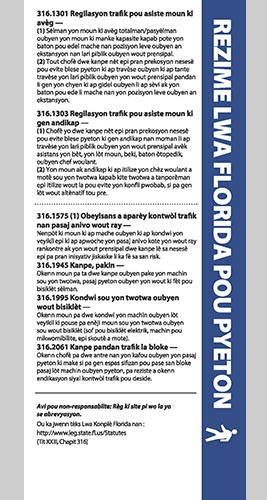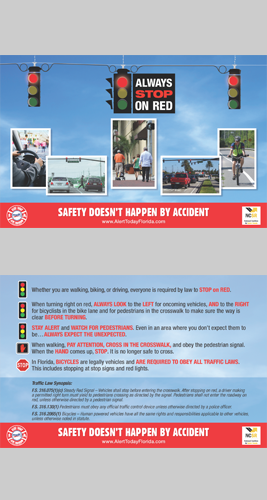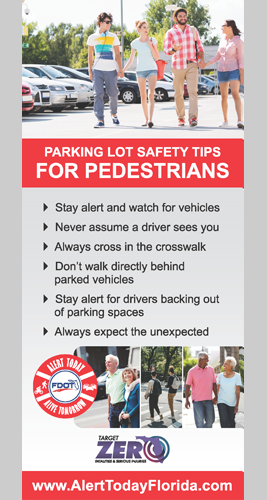Pedestrian Safety

Pedestrian Hybrid Beacons
A Pedestrian Hybrid Beacon (PHB) is an overhead traffic device that resembles a regular traffic signal. It has two side-by-side red indicators above a single yellow indicator. But unlike a regular traffic signal, the signal face for drivers remains "dark" until the pedestrian activates the beacon. Because PHBs remain dark until activated, they can help increase driver attention to pedestrians crossing the roadway and can reduce rear-end collisions.
How does it work?
While the signal is dark, the pedestrian display shows a DON'T WALK indication. To activate the PHB, pedestrians must push the button mounted on the roadside pole. The beacon begins to flash yellow to warn motorists that it has been activated. The brief flashing yellow is followed by a steady yellow, then by a steady red signal requiring motorists to come to a complete stop at the stop line.
While motorists are seeing the steady red, the WALK sign is lit for pedestrians allowing them to cross the roadway. After the pedestrian WALK phase ends, the pedestrian signal changes to a flashing DON'T WALK to notify pedestrians not to begin crossing. During the flashing DON'T WALK phase, the PHB displays alternating flashing red lights to drivers. The flashing red indicates to drivers that they must stop and yield to pedestrians in the crosswalk and can proceed once pedestrians are clear.
Rectangular Rapid Flashing Beacon
The Rectangular Rapid Flashing Beacon (RRFB) is a traffic control device designed to increase driver awareness of pedestrians crossing roadways at marked midblock crossings or uncontrolled intersections. The beacons consist of rectangular-shaped amber Light-Emitting Diodes (LEDs) installed below pedestrian warning signs. The beacons remain “dark” until a pedestrian desiring to cross the street pushes the call button to activate the flashing lights. The lights flash in an irregular flash pattern that is similar to emergency flashers on police vehicles. The flashing lights are intended to attract the driver’s attention and reinforce the driver’s duty to yield to pedestrians in the marked crosswalk.
How does it work?
To activate the RRFB, pedestrians push the button mounted on the pole, and the warning lights begin to flash, notifying motorists of activity in the crosswalk. The pedestrian proceeds carefully into the crosswalk as vehicles yield to the crossing pedestrian or bicyclist. The flashing lights of an RRFB help to increase a motorist’s awareness of a pedestrian crossing.
Why Modern Roundabouts
In Florida, roughly 36% of all traffic fatalities and serious injuries occur at conventional (stop & signal-controlled) intersections.* Roundabouts have been proven to reduce the number of fatal and severe injury crashes by 82% over a stop-controlled intersection, and 78% over a signalized intersection.** Conventional intersections have 32 vehicle and 16 pedestrian conflict points, while roundabouts have only 8 vehicle and 8 pedestrian conflict points. Because there are no crossing movements in a roundabout, left-turn and right-angle crashes are eliminated.
Pedestrians
- Stay on the walkways and cross at designated crosswalks
- Do not enter the central island
- Watch for motorists and bicyclists
- Cross to the splitter island and stop there if traffic requires
*Taken from
Florida’s Traffic Safety Dashboard,
(S4Analytics (signal4analytics.com))
**Taken from the U.S. Department of Transportation Federal Highway Administration
Office of Safety Proven Safety Countermeasures: Roundabouts
(Roundabouts | FHWA (dot.gov))
Complete Streets
In 2014, the state adopted an official Complete Streets policy and in 2018, FDOT published a new Design Manual that has helped provide more context-sensitive roads by putting "the right street in the right place." These actions underscored Florida's commitment to improving safety for all users by making the principles of Complete Streets the foundation of all roadway planning, design, construction, and operations in the state. To date, 87 Florida agencies at the local, regional, and state levels have adopted Complete Streets policies.
One Foolish Act
The One Foolish Act program targets the effects and consequences of impaired driving resulting in crashes with pedestrians and bicyclists.
